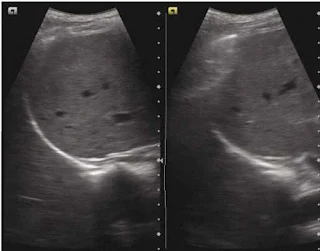Probe placement
This method defines three standardised points: (i) The upper BLUE-point is at the middle of the upper hand; (ii) The lower-BLUE-point is at the middle of the lower hand and the (iii) The PLAPS-point (posterolateral alveolar or pleural syndromes), which is indicated by the intersection of a horizontal line at the level of the lower BLUE-point and a vertical line at the posterior axillary line.
- They had developed an algorithm - Bedside Lung Ultrasound in Emergency and was studied retrospectively with an accurate diagnosis of 90.5% of the cases.
Updated on 17/8/2024
Reference
- Lichtenstein DA, Mezière GA. Relevance of lung ultrasound in the diagnosis of acute respiratory failure: the BLUE protocol. Chest. 2008 Jul;134(1):117-25. doi: 10.1378/chest.07-2800. Epub 2008 Apr 10. Erratum in: Chest. 2013 Aug;144(2):721. PMID: 18403664; PMCID: PMC3734893.





